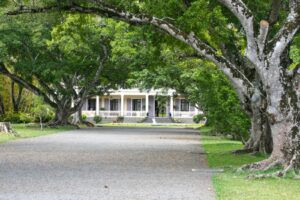
Walking on Majestic Avenue towards the castle is like going through a tunnel. We are told that the trees that obstruct the distant vision but create a magical and intriguing route are ficus macrocarpa and also known as Banyan Chino. This is a ‘tunnel’ that is asking to be investigated. From time to time, the burning sun appears from behind the white puffs of the cloud in the sky. Natural sunlight almost provides spotlights along this tunnel as the rays shine through branches and leaves. The song of the heavenly birds drowns the sound of our tired feet walking along the pedic album. We take a moment to pause. There are ‘light at the end of the tunnel’. We can see distant pillars that are part of a structure located behind a small fountain at the end of the road. We walk slowly under the vegetation blanket that shades us and the view changes with each step as we approach the building. So, as for magic, we have escaped. The avenue suddenly extends in the form of a bowl that surrounds a basic and charming source. Water splashing from the statue of playful children cannot distract from elegance and beauty behind.
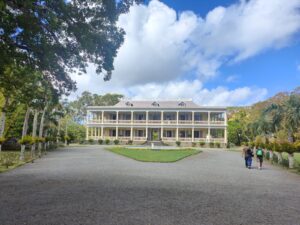
A brief story
Marketing material says ‘Estate established 1774’. As mentioned above, this was during the French occupation of the island. At that time, the plot of the Earth was a concession granted to two young orphans, Marie Louise and Henriette Tréuart de Longpré. We learned that these concessions were granted to settlers to develop the earth. This normally involved property improvements and in the development of agriculture. When the British were in possession of the island, a certain Mr. Jean Baptiste Germain bought a plot of the Earth in 1814. He built the first sugar factory on the island on that property. 7 years later, in 1821, Mr. Jacques de Chasteigner du Mee bought the farm. He started extending it from a modest 186 to around 1400 acres in 8 years. After his death, the property passed to his two daughters: Mrs. Aubin and Mrs. Bourgault. In 1839, the farm was appointed Labourdonnais (perhaps after the governor we learned in the last blog, however, it had nothing to do with this property). The son -in -law of Mrs. Bourgault (Christian Wiehe) was married to her daughter Emilie. In 1856 Christian decided to build a castle. It only took three years to complete. Christian Wiehe was obviously an intelligent man with good commercial insight. They make me believe he was a distinguished Maurician.
The castle
This is not a castle (the French word Château means Castillo), but a magnificent mansion. The pristine appearance shouts wealth and prestige. The restoration work that has been carried out here is the most excellent. The designs of these planting houses have taken into account the warm climate. This has a double terrace that looks like a wrapping around the house that almost hides it. It is impressive with a colonnade of white/cream pillars, almost Romanesque, which are used to withstand the first floor and the roof. It is, in my opinion, a simple but effective design. One could imagine sitting on the terrace and enjoy the view back to the avenue. We sat for a while and saw the playful birds. There is a difference between this Chateau and Eureka mansion, built in 1830, and is marked. One feels that the first owner of Labourdonnais was richer than Mr. Le Clezio, but this is just an impression won. This may be due to different levels of investment in renovations, but there is a clear contrast.
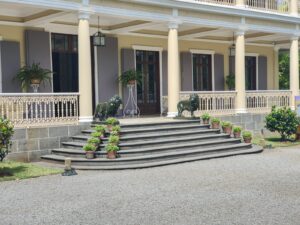
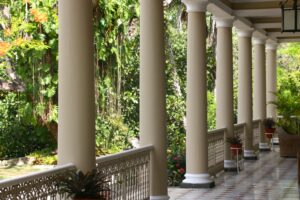
After walking along the terrace and through the entrance hall, we begin to notice the symmetrical alignment and the details of the entire house. The dining room has delicious scenes painted on the walls that add a real touch of color. A spider lamp provides glamor on a smooth brown table that has been left, one feels, for some imaginary guests. On the opposite side of the hall is the living room. Again, this is beautifully restored. However, it is very soft compared to the color and style in the room we have left behind. Other rooms on this floor include a pantry, a storage room and a study.
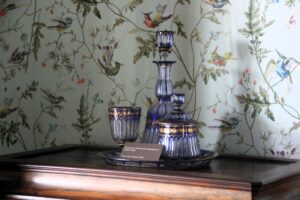
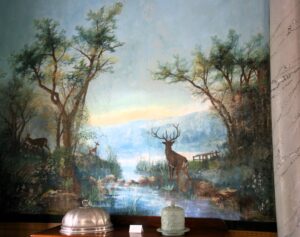
On the first floor there is a well -designed bedroom, and where you can see a documentary on the restoration work that took place here (the weather was short and, unfortunately, we got lost), and then there are some exhibition rooms. These screens provide valuable information about the island, the agricultural activities that took place and the history of the Wiehe family. Unfortunately, we did not have time to read all this information, since we were exhausted from our day. Fortunately, I managed to take some notes on the important information that has proven to be invaluable when writing this blog. After completing this floor, we left the house from the other side to explore the land.
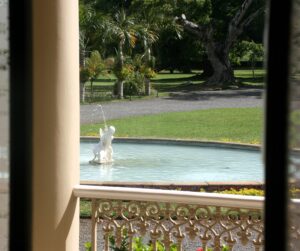
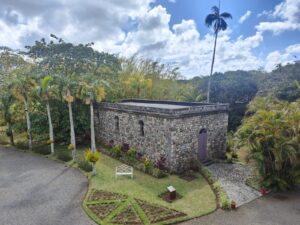
The domain
I mentioned earlier that the farm is vast and that not everyone could be seen in this quick visit. We visited the castle and a walk through the small garden area linked to the side of the house and also to a small area of ’farm’. The small garden area and the land around the house show the natural beauty of vibrant flowers and trees, including imposing palm trees. In total, they create a sumptuous color sample and exudate a powerful fragrance. Being animal lovers, we quickly overlooked the ‘farm’ area, since it seemed too full and many caresses were being performed. Instead, we enjoy the flowers and the life of local birds. On the way we could see the sugar mill in the distance and we ended up in rum distillery. The broader estate has diversified as time has passed and developed a couple of stores, a restaurant, a cafeteria, a gardening center and a school. A ticket to visit the castle also includes a tasting session of its own harvest rum. Created with fruits and sugars cultivated in the farm, we feel sure that the rum is good, but, unfortunately, our taste papillae did not enjoy it (we do not enjoy the rum at home either!). We can say that we tried the rum, but we are not the best tourists to comment.
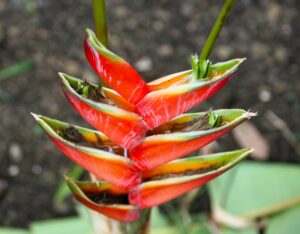

This was the most up -to -date attraction we visited on the island. It is a testimony of the surprising work that has been done to preserve the castle. We hope to return one day. Meanwhile, anyone who visits, do not hesitate to let us know their feelings.







